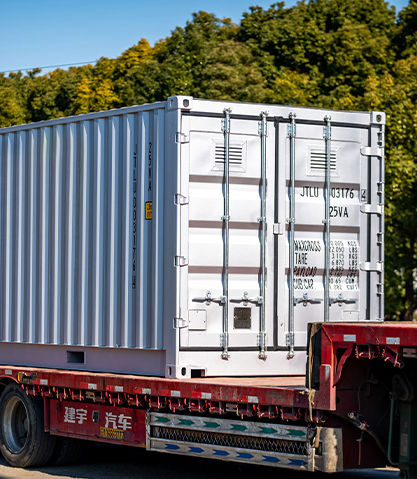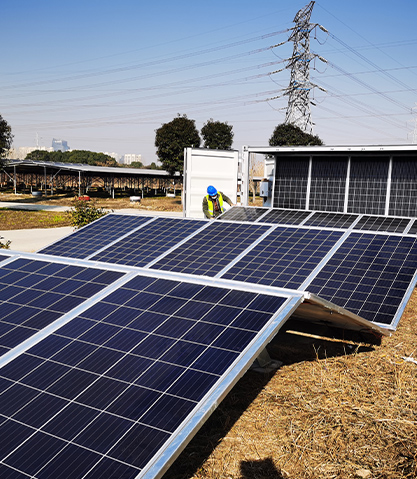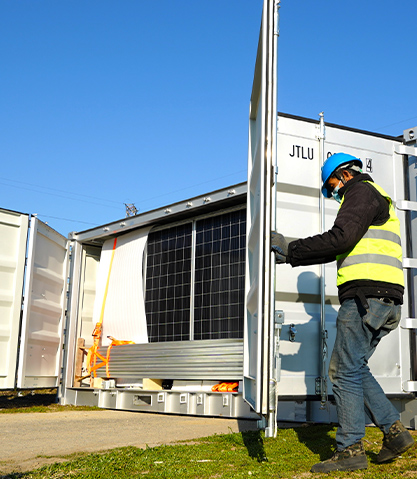In times of crisis—whether caused by natural disasters, conflict, or infrastructure breakdown—access to reliable electricity becomes critical. Hospitals, communication systems, shelters, and logistics centers all depend on power. Solar power containers have emerged as an effective and mobile energy solution that brings electricity to areas where the grid is damaged or nonexistent. Their modular design, fast deployment, and renewable operation make them a valuable asset in emergency and humanitarian missions.
Content
- 1 Rapid Deployment and Portability
- 2 Independent and Off-Grid Operation
- 3 Reliable Power for Medical and Communication Facilities
- 4 Reducing Dependence on Fuel Logistics
- 5 Scalable Energy for Expanding Operations
- 6 Enhancing Safety and Sustainability
- 7 Integration with Other Systems
- 8 Examples of Field Application
- 9 Summary
Rapid Deployment and Portability
A solar power container is a complete, self-contained power system built inside a standard shipping container. It can be transported by truck, ship, or air cargo and set up within hours. Once on-site, the solar panels can be unfolded or mounted quickly, allowing the system to start generating electricity almost immediately. This rapid deployment capability is crucial for disaster relief teams working under time pressure in areas where traditional power infrastructure has been destroyed.
Independent and Off-Grid Operation
Solar power containers operate independently of external grids, making them ideal for remote or devastated regions. Each container integrates solar panels, an inverter, and a battery energy storage system. The stored energy keeps essential devices and facilities running at night or during cloudy conditions. This autonomy allows humanitarian organizations to set up medical tents, emergency communication centers, and lighting systems without waiting for grid restoration or fuel deliveries.
Reliable Power for Medical and Communication Facilities
Field hospitals and emergency clinics depend on stable electricity for refrigeration, diagnostic equipment, ventilators, and lighting. Similarly, communication hubs and data centers require uninterrupted power to maintain coordination among relief teams. Solar power containers provide consistent, clean electricity to these critical facilities. Battery backup systems ensure smooth operation even during periods of low sunlight, minimizing downtime and risk to life.
Reducing Dependence on Fuel Logistics
Traditional emergency power often relies on diesel generators, which require a constant supply of fuel. Transporting fuel to disaster zones is costly, dangerous, and sometimes impossible due to damaged roads or security concerns. Solar power containers eliminate this dependency by using sunlight as their energy source. This not only simplifies logistics but also reduces the environmental impact and operational costs associated with fuel transport and generator maintenance.
Scalable Energy for Expanding Operations
Relief efforts evolve as situations stabilize and expand. Solar power containers can be easily scaled by connecting multiple units in parallel to meet increasing power demands. A cluster of containers can supply electricity for larger camps, water purification systems, or communication networks. This modular scalability allows humanitarian teams to adapt their energy infrastructure according to the size and duration of their mission.
Enhancing Safety and Sustainability
Beyond immediate relief, solar power containers contribute to long-term recovery by providing safe and sustainable energy. They operate silently and produce no exhaust fumes, unlike generators that emit noise and pollutants harmful to both people and the environment. For refugee camps and temporary settlements, this creates a healthier and quieter living environment. Moreover, solar containers can continue serving communities long after the emergency phase, powering schools, clinics, or small businesses.
Integration with Other Systems
Many modern solar power containers include smart monitoring systems that allow remote control and energy management. They can also integrate with hybrid technologies—such as small wind turbines or hydrogen storage—to increase reliability. These systems ensure continuous energy supply even under variable weather conditions, enhancing the resilience of humanitarian operations.
Examples of Field Application
In recent years, solar power containers have supported relief operations in earthquake zones, flood-hit regions, and refugee camps across Africa, Asia, and the Middle East. Aid organizations and governments deploy these units to power water pumping systems, communication networks, and medical services where traditional grids are unavailable. The flexibility and renewable nature of the containers help sustain operations for months or years without major infrastructure investment.
Summary
Solar power containers play a vital role in emergency and humanitarian operations by delivering fast, reliable, and renewable electricity anywhere it is needed. Their ability to operate off-grid, scale up easily, and reduce fuel dependency makes them a practical solution for modern disaster response. As solar technology continues to advance, these containerized systems will become even more efficient, helping relief agencies respond faster and more sustainably in future crises.

 English
English 中文简体
中文简体 عربى
عربى



